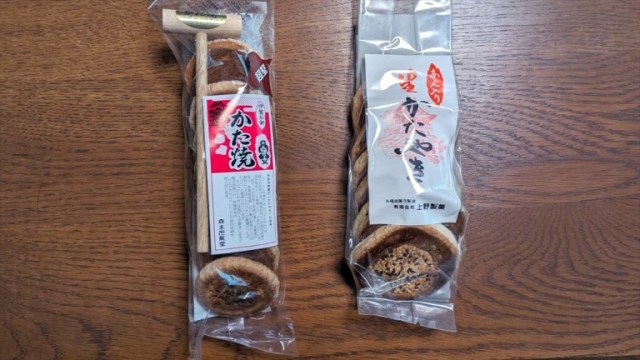
Taste-testing the “soft cooked hardness” of Iga.
You generally don’t use chopsticks, or any other kind of utensils, when eating senbei (Japanese rice crackers). They’re meant to be finger food, a quick little snack that you bite a piece off of, or maybe even just pop into your mouth whole if you’ve got the jaw-opening capacity to accommodate it.
So you might be a little shocked the first time you purchase the type of senbei called katayaki and the clerk gives you a hammer.
▼ Stop! Hammer…senbei time…?
But you might have expected something like this if you know that that the kata part of katayaki means “hard,” and yaki is a suffix showing that something has been baked, grilled, or fried. Basically, katayaki’s name would translate to “cooked hardness,” and that’s very much a case of truth in advertising.
But why are they so hard? Because of ninja. Katayaki are a unique type of senbei found in Iga, a district of present-day Mie Prefeture that in times past was the stronghold of the Iga ninja clan.
When in the field for missions of espionage or infiltration, ninja needed a portable source of energy and nutrition. Senbei fit the bill, and to ensure that there was as much food as possible in a compact cracker, and that it would keep for a long time while out in the field, katayaki are extremely dense, with very little moisture or air inside.
▼ Finally breaking one in half made us feel like we’d pulled off a ninja finishing strike technique.
Katayaki are so hard that not only is it pretty much impossible to bite through one using only your teeth, once you’ve got a piece in your mouth, the next recommended step is to let it sit there for a while so that your saliva can soften it up a little, as opposed to trying to pass the jagged shards down your throat as quickly as possible.
“Hard and painful” isn’t usually a winning combination in snack food design, but their denseness make katayaki an especially substantial and flavorful kind of senbei, and their ninja novelty has contributed to their becoming one of Iga’s most popular souvenirs. So when we pulled into Iga Drive-in, a roadside rest stop in Iga City, we weren’t surprised to see a whole shelf of katayaki. We were surprised, though, to see that they were also offering nama katayaki.
▼ 生かたやき = nama katayaki
Linguistically, having nama, which literally means “raw,” in the same name as yaki could be considered a contradiction. However, nama is also sometimes used to denote a soft texture when talking about snack foods. Of course, “soft cooked hardness” is also a contradiction, and since we here at SoraNews24 have never made any pretext of attempting to suppress our loves of snacks and linguistics, we picked up a box of nama katayaki for 600 yen (US$4.15).
▼ Nama katayaki
Placing the soft katayaki next to a regular/hard one, we saw that the soft version was considerably bigger, about twice as large in diameter. That size was reflected by a considerable amount of heft when we held the nama katayaki in our hand.
At this point, we should mention that while we were intrigued by the idea of soft katayaki, we were also a little worried. The whole thing with katayaki is that they’re hard, right? Take that away from them, and won’t their identity, and really their whole reason for existing, shatter into pieces like a mallet-cracked rice cracker?
But it turned out that this wasn’t the case, for two reasons. First, as we learned by giving the nama katayaki a gentle test squeeze, we’re not anyone who would think of this as “soft” unless they were directly comparing it to a regular katayaki. The nama katayaki is about as pliable as a swimming kickboard, so it’s not so much a “soft” katayaki as a “softer than normal katayaki but still very hard” katayaki.
However, that distinction is still significant enough that nama katayaki can be eaten without a hammer or snapping the rice cracked in two with your hands. Our reporter Haruka Takagi, who drew taste-test duties/privileges for this investigation, actually was able to bite into the nama katayaki with her teeth and tear off a piece.
Taking a look at the cross section, you’ll notice there’s slightly more air inside the nama katayaki, and also a core of dried anko, or sweet red bean paste! The presence of the anko, something that’s not normally present in senbei, makes the nama katayaki feel a little like a thin, flat manju (sweet bean cake), and the mix of sweet and floury flavors is a delicious combination.
So in the end, it turns out that there’s room in this world, and our stomachs, for both the regular hard katayaki and the nominally soft nama katayaki. Really, the only question left unanswered is what the Iga ninja would think, but considering that nama katayaki can be eaten with less potentially enemy-alerting snaps and cracking sounds, we think they’d approve of this modern evolution of their shinobi snacks.
Location information
Iga Drive-in / 伊賀ドライブイン
Address: Mie-ken, Iga-shi, Tsugemachi 5704-1
三重県伊賀市柘植町5704-1
Website
Photos ©SoraNews24
● Want to hear about SoraNews24’s latest articles as soon as they’re published? Follow us on Facebook and Twitter!
[ Read in Japanese ]

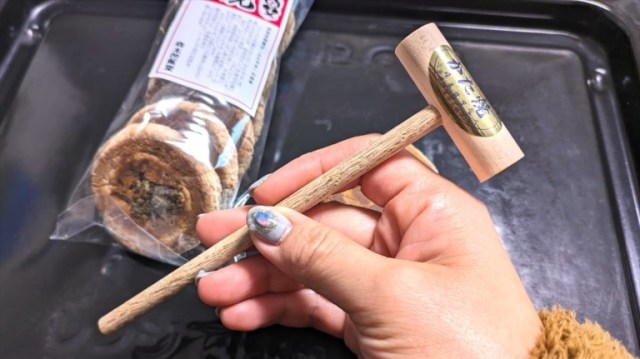
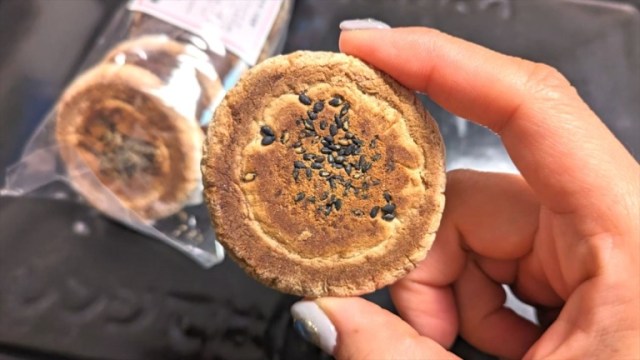
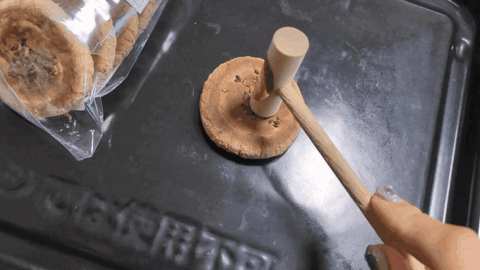
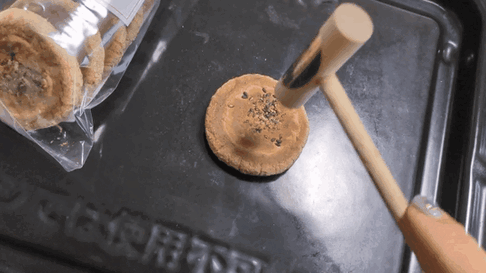
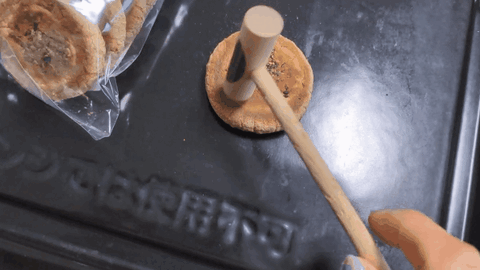
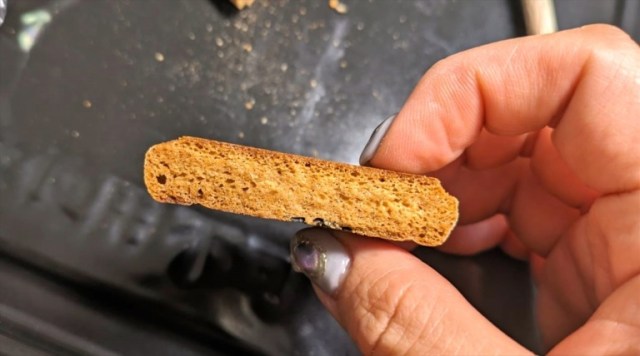
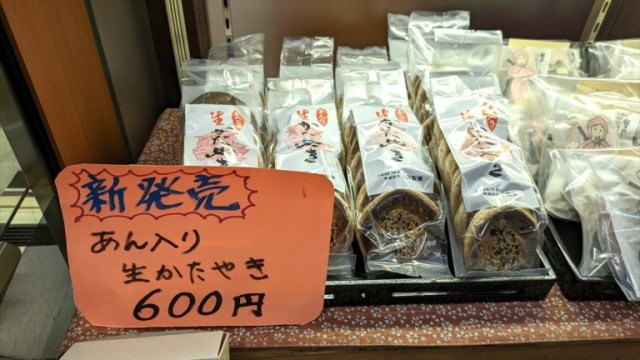
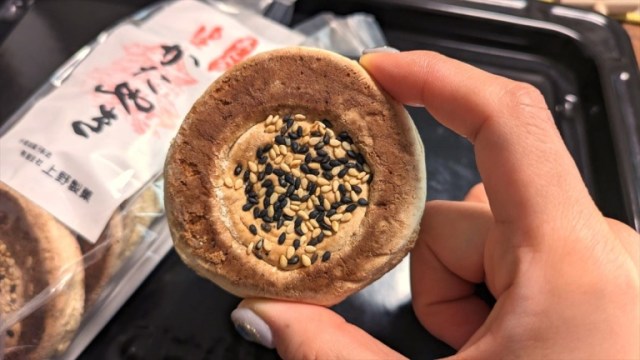
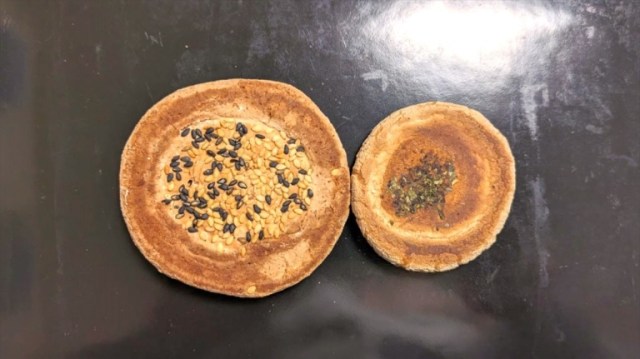

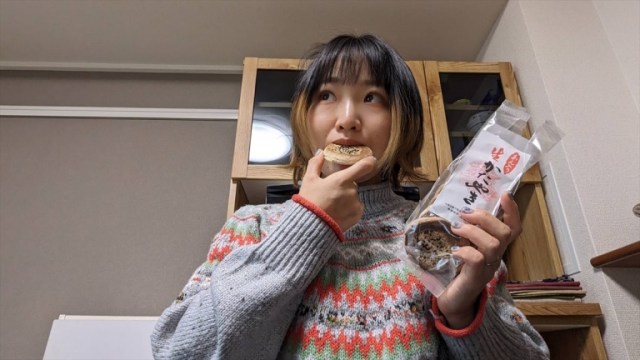
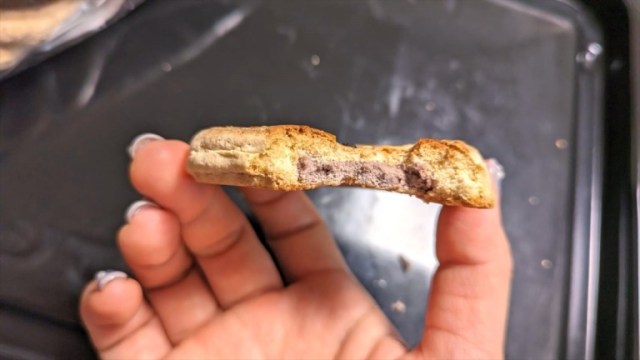
 Pepsi Japan to release its “most refreshing” cola ever
Pepsi Japan to release its “most refreshing” cola ever Japanese city encouraging visitors and locals to cosplay as ninja for annual Ninja Festa
Japanese city encouraging visitors and locals to cosplay as ninja for annual Ninja Festa We smash up some rock-hard rice crackers with a hammer to find out which one is the toughest
We smash up some rock-hard rice crackers with a hammer to find out which one is the toughest Wet rice crackers? Trying nure-senbei for the first time【Taste test】
Wet rice crackers? Trying nure-senbei for the first time【Taste test】 Pepsi releases a new cola in Japan specifically for karaage fried chicken
Pepsi releases a new cola in Japan specifically for karaage fried chicken Demon Slayer: Kimetsu no Yaiba gets new roller coaster attractions and food at Universal Studios Japan
Demon Slayer: Kimetsu no Yaiba gets new roller coaster attractions and food at Universal Studios Japan Japan’s new difficult-to-drink-from beer glass protects your liver, but it’s a brutal experience
Japan’s new difficult-to-drink-from beer glass protects your liver, but it’s a brutal experience New Nintendo Lego kit is a beautiful piece of moving pixel art of Mario and Yoshi【Photos】
New Nintendo Lego kit is a beautiful piece of moving pixel art of Mario and Yoshi【Photos】 How to order snacks on a Shinkansen bullet train in Japan
How to order snacks on a Shinkansen bullet train in Japan New samurai glasses are Japan’s latest weird must-have souvenir
New samurai glasses are Japan’s latest weird must-have souvenir Come play hide-and-seek on a deserted Japanese island this August and November
Come play hide-and-seek on a deserted Japanese island this August and November New Pokémon ice cream, dessert drinks, and cool merch coming to Baskin-Robbins Japan【Pics】
New Pokémon ice cream, dessert drinks, and cool merch coming to Baskin-Robbins Japan【Pics】 Caffeinated ramen for gamers that you can eat with one hand going on sale in Japan
Caffeinated ramen for gamers that you can eat with one hand going on sale in Japan Starbucks Japan unveils New Year’s collection for 2024, with daruma, dragons and Mt Fuji for luck
Starbucks Japan unveils New Year’s collection for 2024, with daruma, dragons and Mt Fuji for luck Real Buddhist monk plays Super Mario Bros., recites prayers every time he kills an enemy【Video】
Real Buddhist monk plays Super Mario Bros., recites prayers every time he kills an enemy【Video】 Nintendo history you can feel – Super NES, N64, and GameCube controllers become capsule toys
Nintendo history you can feel – Super NES, N64, and GameCube controllers become capsule toys Hello, cosmetics! Clinique teams up with Hello Kitty this summer for first-time collaboration
Hello, cosmetics! Clinique teams up with Hello Kitty this summer for first-time collaboration “The most Delicious Cup Noodle in history” – Japan’s French Cup Noodle wins our heart【Taste test】
“The most Delicious Cup Noodle in history” – Japan’s French Cup Noodle wins our heart【Taste test】 Starbucks releases a cute Frappuccino and Unicorn Cake…but not in Japan
Starbucks releases a cute Frappuccino and Unicorn Cake…but not in Japan Kyoto Tower mascot termination reveals dark side behind cute Japanese characters
Kyoto Tower mascot termination reveals dark side behind cute Japanese characters McDonald’s Japan’s Soft Twist Tower: A phantom ice cream only sold at select branches
McDonald’s Japan’s Soft Twist Tower: A phantom ice cream only sold at select branches Yabai Ramen: What makes this Japanese ramen so dangerous?
Yabai Ramen: What makes this Japanese ramen so dangerous? Finally! Nintendo Japan expands Switch 8-bit controller sales to everybody, Online member or not
Finally! Nintendo Japan expands Switch 8-bit controller sales to everybody, Online member or not Japanese government wants to build luxury resorts in all national parks for foreign tourists
Japanese government wants to build luxury resorts in all national parks for foreign tourists To combat declining birth rate, Japan to begin offering “Breeding Visas” to foreigners
To combat declining birth rate, Japan to begin offering “Breeding Visas” to foreigners 10 things you should buy at 7-Eleven in Japan
10 things you should buy at 7-Eleven in Japan Studio Ghibli releases anime heroine cosplay dresses that are super comfy to wear
Studio Ghibli releases anime heroine cosplay dresses that are super comfy to wear Woman charged for driving suitcase without a license in Osaka
Woman charged for driving suitcase without a license in Osaka Studio Ghibli unveils My Neighbour Totoro miniature house model
Studio Ghibli unveils My Neighbour Totoro miniature house model Kyoto experiencing problems with foreign tourists not paying for bus fares, but not on purpose
Kyoto experiencing problems with foreign tourists not paying for bus fares, but not on purpose Fighting mild hunger with a Japanese soda that turns into jelly in the stomach【Taste test】
Fighting mild hunger with a Japanese soda that turns into jelly in the stomach【Taste test】 Studio Ghibli’s Howl’s Moving Castle tapestry unveiled in Japan for first time
Studio Ghibli’s Howl’s Moving Castle tapestry unveiled in Japan for first time McDonald’s new Happy Meals offer up cute and practical Sanrio lifestyle goods
McDonald’s new Happy Meals offer up cute and practical Sanrio lifestyle goods Sales of Japan’s most convenient train ticket/shopping payment cards suspended indefinitely
Sales of Japan’s most convenient train ticket/shopping payment cards suspended indefinitely Sold-out Studio Ghibli desktop humidifiers are back so Totoro can help you through the dry season
Sold-out Studio Ghibli desktop humidifiers are back so Totoro can help you through the dry season Japanese government to make first change to romanization spelling rules since the 1950s
Japanese government to make first change to romanization spelling rules since the 1950s Foreigner’s request for help in Tokyo makes us sad for the state of society
Foreigner’s request for help in Tokyo makes us sad for the state of society Ghibli founders Toshio Suzuki and Hayao Miyazaki contribute to Japanese whisky Totoro label design
Ghibli founders Toshio Suzuki and Hayao Miyazaki contribute to Japanese whisky Totoro label design Doraemon found buried at sea as scene from 1993 anime becomes real life【Photos】
Doraemon found buried at sea as scene from 1993 anime becomes real life【Photos】 Tokyo’s most famous Starbucks is closed
Tokyo’s most famous Starbucks is closed Princesses, fruits, and blacksmiths: Study reveals the 30 most unusual family names in Japan
Princesses, fruits, and blacksmiths: Study reveals the 30 most unusual family names in Japan Asahi Super Dry’s draft beer in a can, the Nama Jockey Can, is here【Taste test】
Asahi Super Dry’s draft beer in a can, the Nama Jockey Can, is here【Taste test】 Weird Japanese vending machine find gives us unique sweet potato sweets
Weird Japanese vending machine find gives us unique sweet potato sweets Japan super budget dining – What’s the best way to spend 1,000 yen at Family Mart?
Japan super budget dining – What’s the best way to spend 1,000 yen at Family Mart? We try a dubious-sounding “wet dorayaki” and are in for more than one surprise
We try a dubious-sounding “wet dorayaki” and are in for more than one surprise Pikachu and Kyoto candy maker team up for confectionary collaboration centuries in the making
Pikachu and Kyoto candy maker team up for confectionary collaboration centuries in the making Japanese burger chain Freshness Burger completely ignores tsukimi season in favor of…mushrooms?
Japanese burger chain Freshness Burger completely ignores tsukimi season in favor of…mushrooms? We try some “raw” dorayaki from Kyoto and are overwhelmed with its thickness
We try some “raw” dorayaki from Kyoto and are overwhelmed with its thickness Onikun: Epic onigiri so big they’re half demon, half rice ball
Onikun: Epic onigiri so big they’re half demon, half rice ball Foreigner in Japan gets “scary Cretaceous cookies” at work, Japanese wife can’t wait to eat them
Foreigner in Japan gets “scary Cretaceous cookies” at work, Japanese wife can’t wait to eat them Japan’s ninja museum has been robbed by thieves in the middle of the night
Japan’s ninja museum has been robbed by thieves in the middle of the night We put a can of condensed milk in a pressure cooker and the results are sweet and delightful!
We put a can of condensed milk in a pressure cooker and the results are sweet and delightful! Frozen pudding pops among the many surprises at Ramen Deniro in Tokyo
Frozen pudding pops among the many surprises at Ramen Deniro in Tokyo Asahi Super Dry to sell draft beer in a can
Asahi Super Dry to sell draft beer in a can Japanese ninja group wants to hire new member, must have strong aura and mental fortitude
Japanese ninja group wants to hire new member, must have strong aura and mental fortitude Taste-testing every single sakura sweet and cherry blossom drink we could find at Mujirushi
Taste-testing every single sakura sweet and cherry blossom drink we could find at Mujirushi Starbucks Japan reveals new Sakura Frappuccino for 2022
Starbucks Japan reveals new Sakura Frappuccino for 2022
Leave a Reply